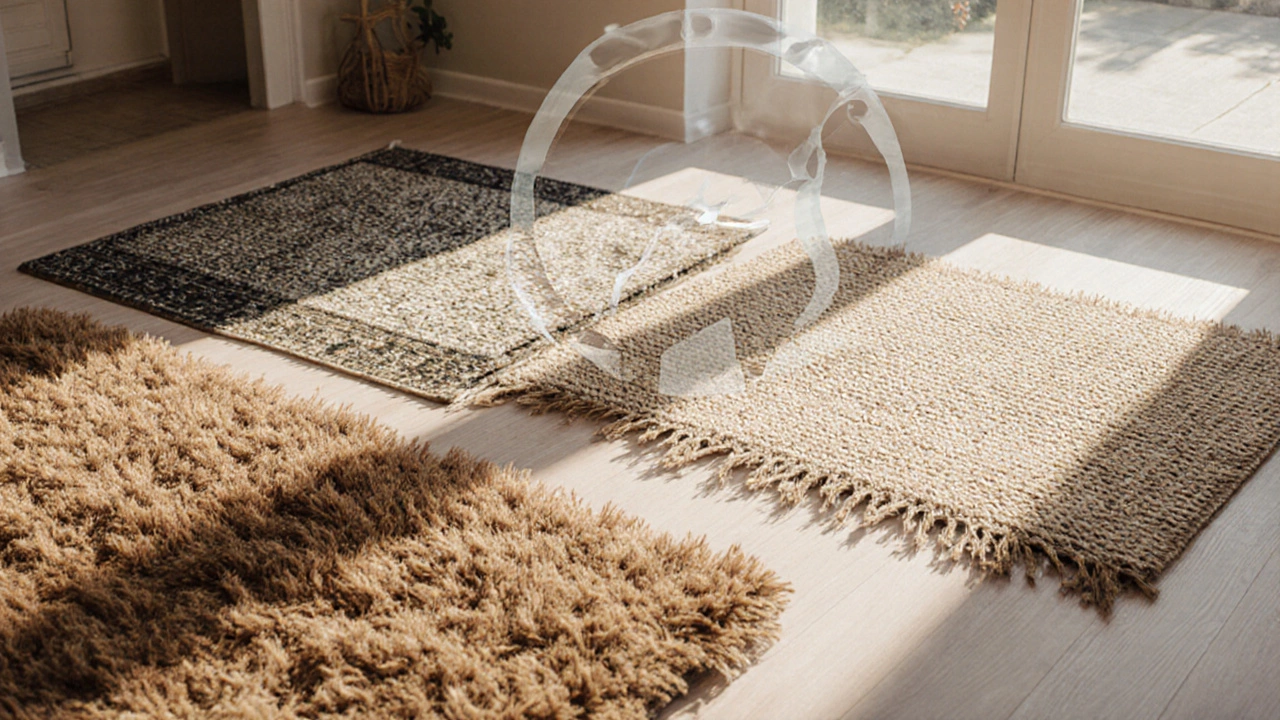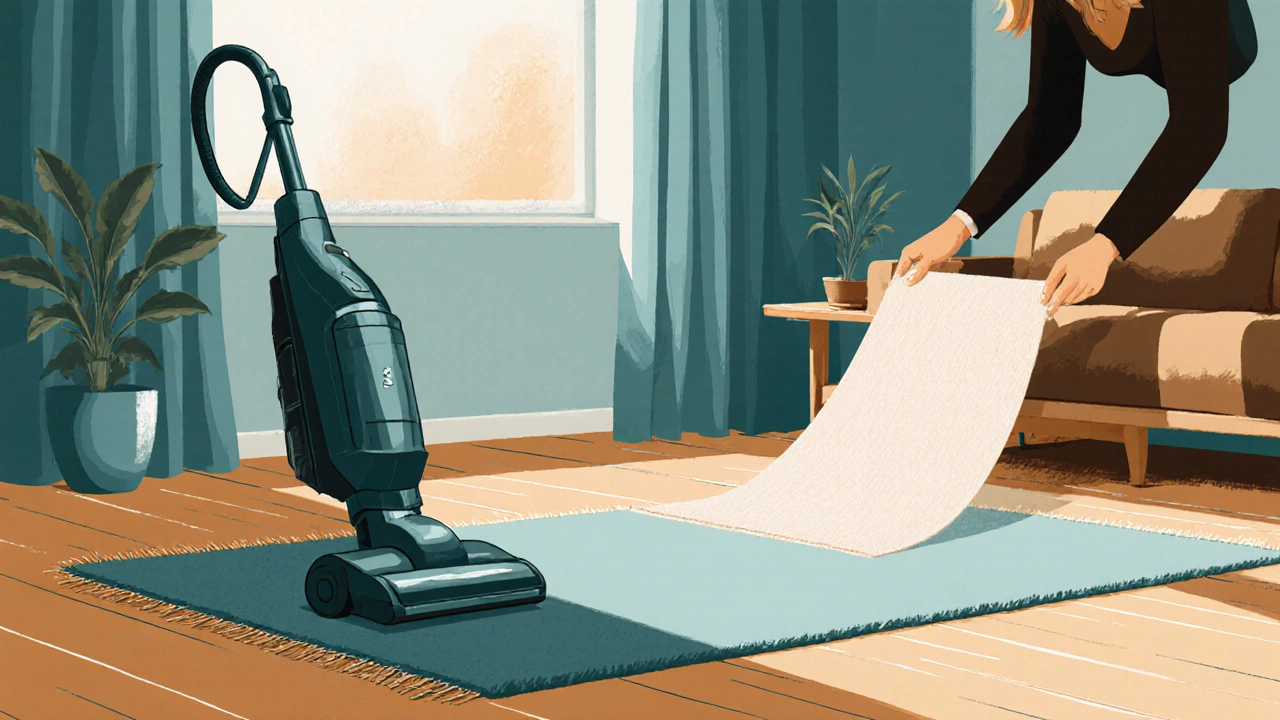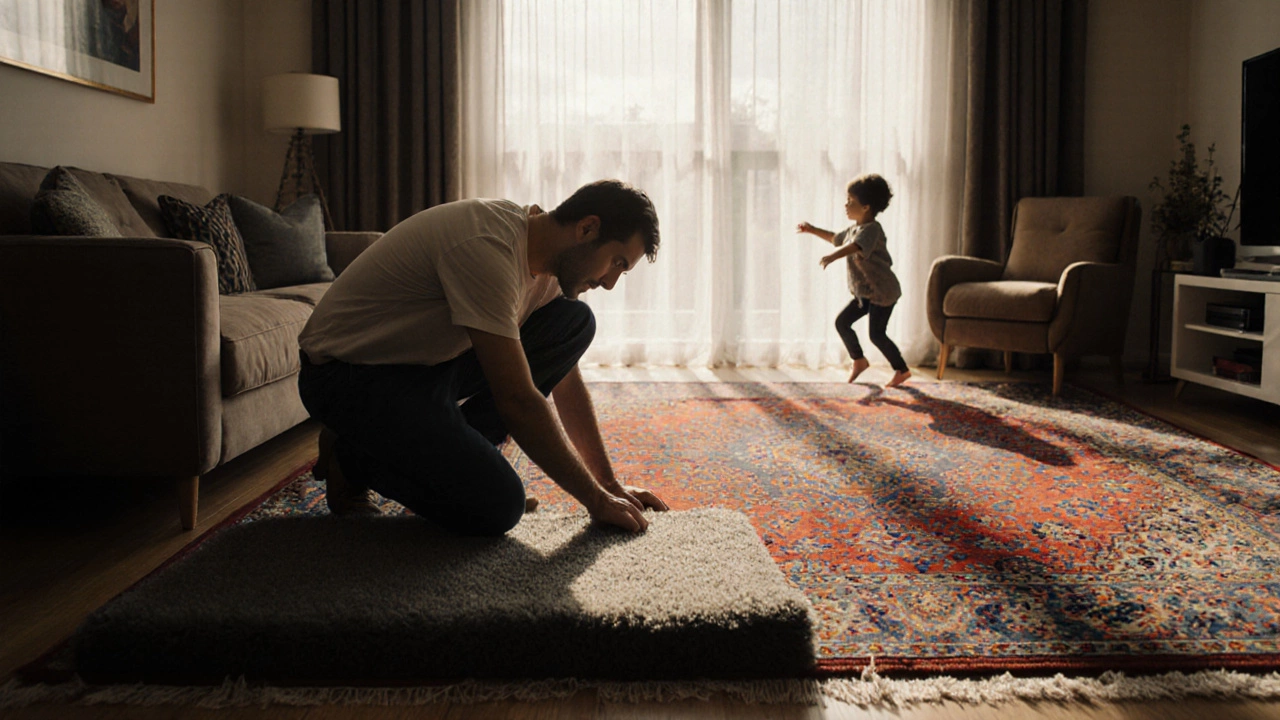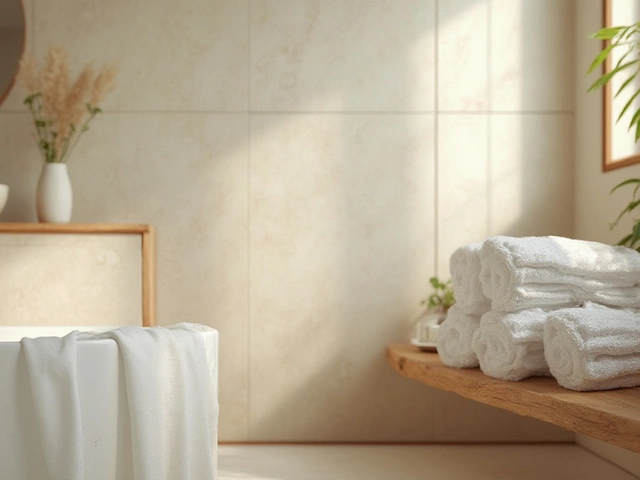
Key Takeaways
- Rug lifespan ranges from 5 years (low‑grade synthetics) to 20+ years (high‑quality wool).
- Material, construction, foot traffic, sunlight, and upkeep are the biggest durability drivers.
- Regular cleaning, rotation, and a proper rug pad can add 5‑10 years to most rugs.
- Replace a rug when fibers show permanent wear, backing lifts, or stains become impossible to remove.
- Choosing a rug built for your space’s load and light exposure pays off in longevity.
When you ask rug is a floor covering made from various fibers, designed to add comfort, style, and insulation to a room, the first thing most people want to know is its durability. In plain terms, you’re curious about the rug lifespan you can expect from a good quality piece.
What Determines a Rug’s Lifespan?
Three core factors set the wear‑and‑tear clock ticking on a rug:
- Material - Natural fibers like wool and silk tend to outlast synthetics such as polypropylene.
- Construction - Hand‑knotted or hand‑tufted rugs have tighter pile and stronger backings than machine‑woven options.
- Environment - Heavy foot traffic, direct sunlight, and moisture accelerate breakdown.
Let’s break each one down with real‑world details.
Wool rug is a natural, resilient fiber known for its elasticity and natural stain resistance typically lasts 15‑20 years in a family home when cared for properly. Wool’s crimp creates a springy pile that recovers after compression, which is why it tolerates high foot traffic.
Synthetic rug commonly uses polypropylene or polyester, offering low cost and easy cleaning usually survives 5‑10 years. It’s great for entryways but fades faster under UV exposure.
Construction matters, too. Hand‑knotted rug features each knot tied individually, resulting in a dense, durable weave can endure decades, whereas Machine‑woven rug is produced on looms at high speed, often with a looser pile that wears sooner may need replacement after a few years of heavy use.
Environmental stressors are often overlooked. Foot traffic rating (low, medium, high) directly correlates with wear. Sunlight triggers fiber breakdown, especially in cotton and jute. Moisture encourages mold, so bathrooms need a rug with a moisture‑resistant backing.
Typical Lifespans by Rug Type
| Material | Typical Lifespan | Durability Rating | Maintenance Ease | Average Cost (USD) |
|---|---|---|---|---|
| Wool | 15‑20 years | High | Moderate (vacuum, spot‑clean) | $150‑$800 |
| Polypropylene (Synthetic) | 5‑10 years | Medium | Easy (machine‑washable options) | $30‑$200 |
| Cotton | 3‑7 years | Low‑Medium | Easy (washable) | $20‑$150 |
| Jute/Natural Fiber | 5‑8 years | Medium | Moderate (vacuum, spot‑clean) | $70‑$300 |
| Silk | 10‑15 years (low traffic) | Medium‑High | Delicate (professional cleaning) | $500‑$3000 |
The numbers above are averages for residential use. High‑traffic commercial settings can cut a rug’s life in half, while a low‑traffic bedroom can extend it beyond the upper range.

How to Extend the Life of Your Rug
Good habits keep a rug looking fresh and stretchy for years. Here are proven practices:
- Vacuum regularly. Use a suction‑only setting for delicate fibers; a rotating brush is fine for sturdy wool.
- Rotate every 6‑12 months. This evens out wear caused by uneven foot traffic.
- Use a rug pad. Rug pad provides cushion, preventing slipping and absorbing impact reduces stress on the backing and extends pile life.
- Shield from sunlight. Place curtains or UV‑filtering window film over windows where possible.
- Address stains quickly. Blot (don’t rub) with a mild detergent; for wool, use a pH‑neutral cleaner.
- Professional deep cleaning. Schedule a deep clean every 2‑3 years for high‑traffic rugs.
These steps can add 5‑10 years to most rugs, turning a 7‑year synthetic piece into a 12‑year performer.
When to Replace a Rug
Even the best care can’t reverse permanent damage. Look for these tell‑tale signs:
- Frayed or pulled edges.
- Back‑ing bubbling or separation.
- Irreversible stains that seep into the pile.
- Visible thinning in high‑traffic zones.
- Persistent odors despite cleaning.
If two or more of these appear, it’s time to retire the rug and invest in a fresh one. Replacing early avoids tripping hazards and keeps your interior looking polished.

Choosing a Rug Built to Last
Shopping with lifespan in mind saves money in the long run. Keep these criteria on your checklist:
- Material grade. Opt for 100% wool or high‑density polypropylene; avoid blends with low‑quality acrylic.
- Construction quality. Hand‑knotted, hand‑tufted, or tightly woven machine‑made rugs score higher on durability.
- Backing type. Look for a reinforced latex or felt backing; flimsy cotton backing lifts quickly.
- Weight per square foot. Heavier rugs often indicate denser pile and better wear resistance.
- Warranty. Brands that offer a 5‑year or longer warranty signal confidence in their product’s lifespan.
For families with kids or pets, a high‑traffic synthetic rug with stain‑resistant treatment may be more practical than a delicate silk piece.
Frequently Asked Questions
How often should I rotate my rug?
Rotate a rug 180 degrees every 6‑12 months. This balances wear in high‑traffic zones and helps the pile recover evenly.
Can I wash a wool rug in my washing machine?
Generally no. Wool rugs should be spot‑cleaned or professionally cleaned. Machine washing can cause felting and shrinkage.
Does a rug pad really make a difference?
Yes. A good pad cushions foot traffic, prevents slipping, and protects the rug’s backing from premature wear. Look for a dense felt or rubber pad with a breathable back.
What’s the best way to clean a stain on a synthetic rug?
Blot the spill with a clean cloth, then apply a mixture of warm water and a few drops of dish soap. Rinse with a damp cloth and let dry fully.
How do I know if a rug’s warranty is reliable?
Read the fine print: reputable warranties cover defects in material and workmanship for at least 5 years and require proper maintenance records.




